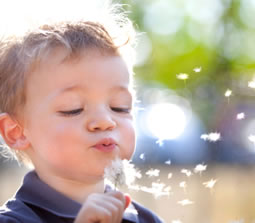 It’s important to note that when the Buddha taught how to practice compassion, he always began with ourselves. This isn’t selfish. After all, if we can’t trust and open our hearts to ourselves – the one person on this earth that we know the best and are closest to – how could we possibly know how to do it for others? Any reticence, anger, or doubt we carry — no matter how hidden – will color all our relationships. As a colleague aptly puts it, “we can’t be the solution until we stop being part of the problem.”
It’s important to note that when the Buddha taught how to practice compassion, he always began with ourselves. This isn’t selfish. After all, if we can’t trust and open our hearts to ourselves – the one person on this earth that we know the best and are closest to – how could we possibly know how to do it for others? Any reticence, anger, or doubt we carry — no matter how hidden – will color all our relationships. As a colleague aptly puts it, “we can’t be the solution until we stop being part of the problem.”
Somehow we’re never good enough. I admit I often think this, though I’m getting a lot better about it. I’ve spent many long hours on my meditation cushion learning to love myself. The practice I’ve done is called the Metta Bhavana, or the Development of Loving-kindness. And I’ve spent a lot of time on that all-important first stage, which focuses on myself. The whole practice has never been easy for me, and to this day I still find it generally more elusive than Mindfulness.
I’d like to share with you some of what I’ve learned through this practice. What I describe is something I did in the context of a formal meditation (and specifically as the first stage of the Metta Bhavana), but I think it could also be done as an informal contemplation outside of meditation.
First of all, it’s important that we find a time when we can quietly just sit and do nothing for a while. So don’t do this while jogging, doing yoga, or eating dinner. I mean we literally sit still with no other agenda.
We begin by bringing our awareness inward to ourselves. As a warm up, it’s helpful to start by sensing all the parts of your body from the inside, one by one, from your toes all the way up to your head. We allow ourselves to fall into a comfortable, relaxed, and open state of mind and body. What’s interesting is that by doing this, we’re already practicing kindness toward ourselves. This is a great start!
Next we notice how we’re feeling. Literally just notice. We don’t need to analyze, judge or change anything. Is it a good feeling – happy, easy, content, calm, or peaceful? Or an icky one – restless, angry, impatient, bored, or depressed? Or is it sort of gray or blank, with no particular feeling tone at all? Maybe you’re feeling “something,” but you can’t put words on it. That’s fine. Any of this is fine. We’re just noticing.
What we’re doing is opening up to and receiving whatever we’re feeling RIGHT NOW. The degree to which we can be mindfully aware of what state we’re presently in, the better off we’ll be. How clearly are we seeing it? How willing are we to be with it, and not try to push it away or fix it, judge it as “bad” or “good,” but just be openly present with it?
Because we think this is supposed to be a practice of loving ourselves, we might be tempted to try to make ourselves feel happier and more lovey. Or that we somehow shouldn’t be feeling any of the bad feelings that might be there. In the traditional method, it’s suggested that we repeat the phrase, “May I be happy” to ourselves. That’s never worked for me, because it feels like I’m trying to change whatever bad feelings that are there. So I don’t do it. We need to start by simply accepting ourselves right now, in this moment, as we are, in whatever way works for you. There is no right or wrong.
Once we have a clear picture of what’s happening, then what’s our response? Is it kind, positive, helpful? When we practice the Metta Bhavana, on one level we’re learning to see the difference between what we can and can’t change. We need to accept the feelings that have already happened, but then train ourselves to respond to ANYTHING that’s there in the kindest possible way. That’s the practice.
So then what if we can’t stop the judgmental, critical thoughts, or that “I must fix this” sort of feeling? Well, how would we respond if we found our best friend in that state? Would we tell her she’s being bad? Or tell her to just stop it? I doubt it. I’d want to sit down with her and be supportive, find out what’s underneath all those thoughts, and why she’s feeling that way. I’d want to at least just listen and let her know I care. Can we do that for ourselves? Now THAT is a practice of kindness.
Every time we turn to ourselves with patience and forgiveness for our supposed “failures,” we’re training ourselves to be kind. I find a sense of relief in being honest and authentic with myself in this way. It’s not an admission of failure. I’m not condoning my critical thoughts, but I AM forgiving the person who is having those thoughts.
So the whole idea here is to learn how to BE kind, right now, and not to try to shape myself into some future-oriented image of what I think I should be. The more we practice the act of being kind now, the more it becomes natural to us. This is the practice.
The Buddha was right. He said that in all things, when we eliminate the cause, the result ceases to exist. When we stop our negative responses, our habitual negative tendencies begin to weaken and fade away. When we open up and receive life as it is – without adding anything to it — everything flows to its natural conclusion. Like water flowing downstream into a lake, it eventually settles to a naturally calm, clear, and peaceful state. Effortlessly.
And that’s how I’ve begun to learn how to love myself.
